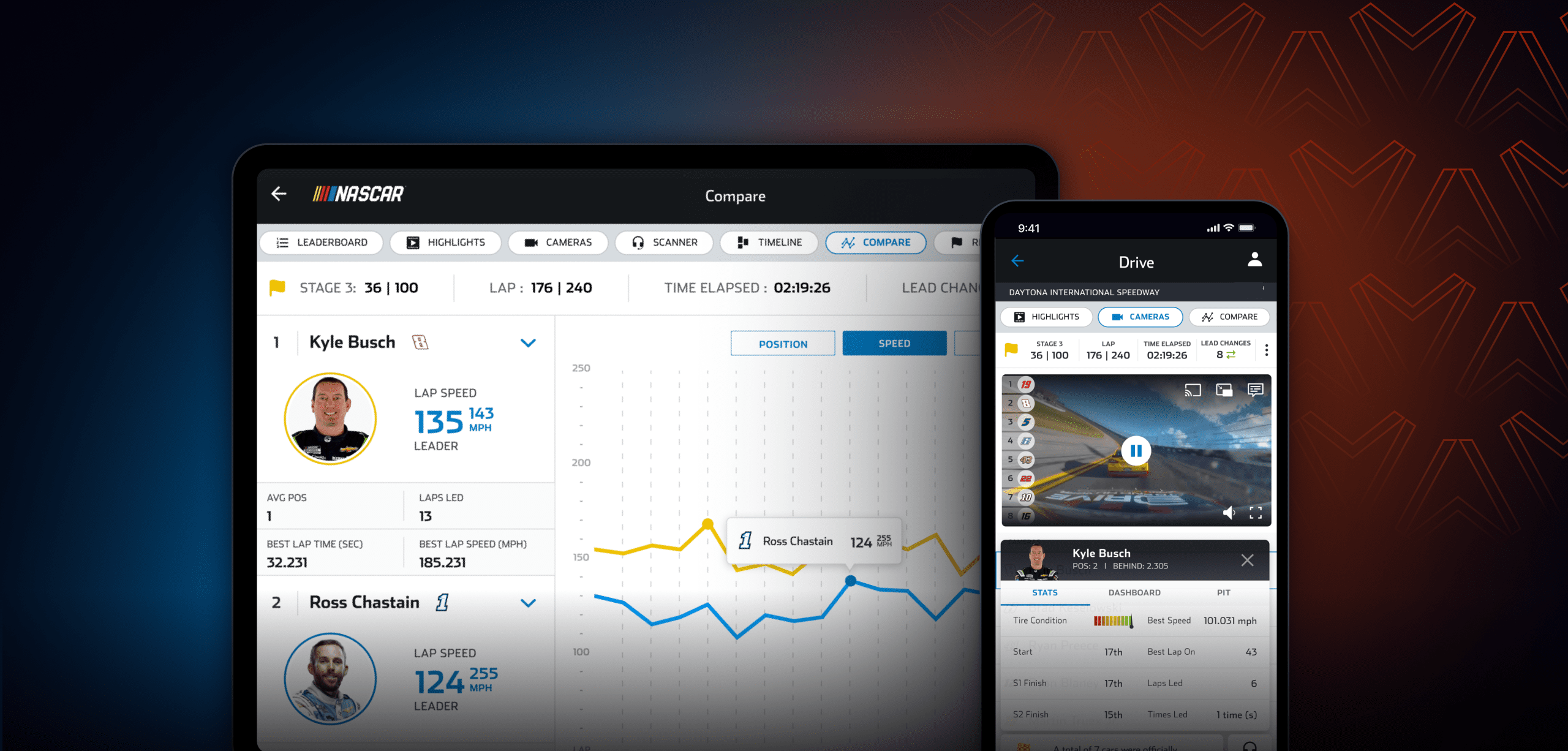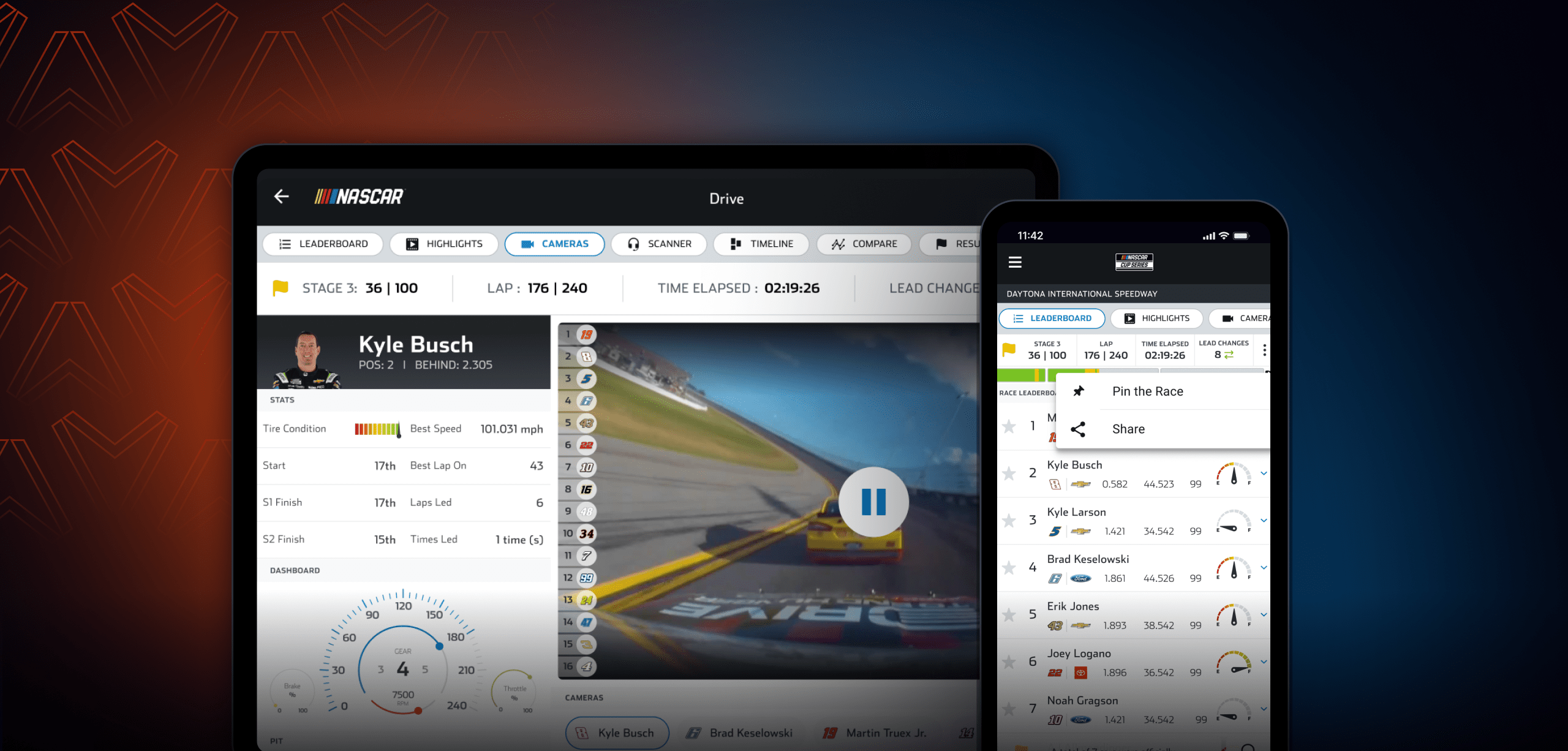In the world of motorsport, NASCAR differentiates itself by enabling fans not only to watch, but to virtually experience the race via their Drive platform. Drive offers access to a host of engaging features from in-car video streams to live dashboard data, including speed, RPM, break, throttle, and fuel percentage.
With 40 cars whirring around the track up to 200mph, quick reaction times from drivers are essential. Consequently, cars emit 100 data points 120 times per second, contributing to more than a terabyte of high-frequency data per event.
For the Drive live dashboard feature to keep pace with the race, telemetry data must be broadcast to users efficiently. However, with the number of users fluctuating significantly depending on the popularity of the race, provisioning servers with enough resources to handle their inefficient long polling-based architecture became a challenge that detracted from feature innovation.
What’s more, abrupt and unexpected events, such as crashes or close finishes, often result in sudden spikes in viewership as fans rush to stay updated about the situation. Previously, this required an engineering resource on standby to monitor and provision extra capacity if needed.





